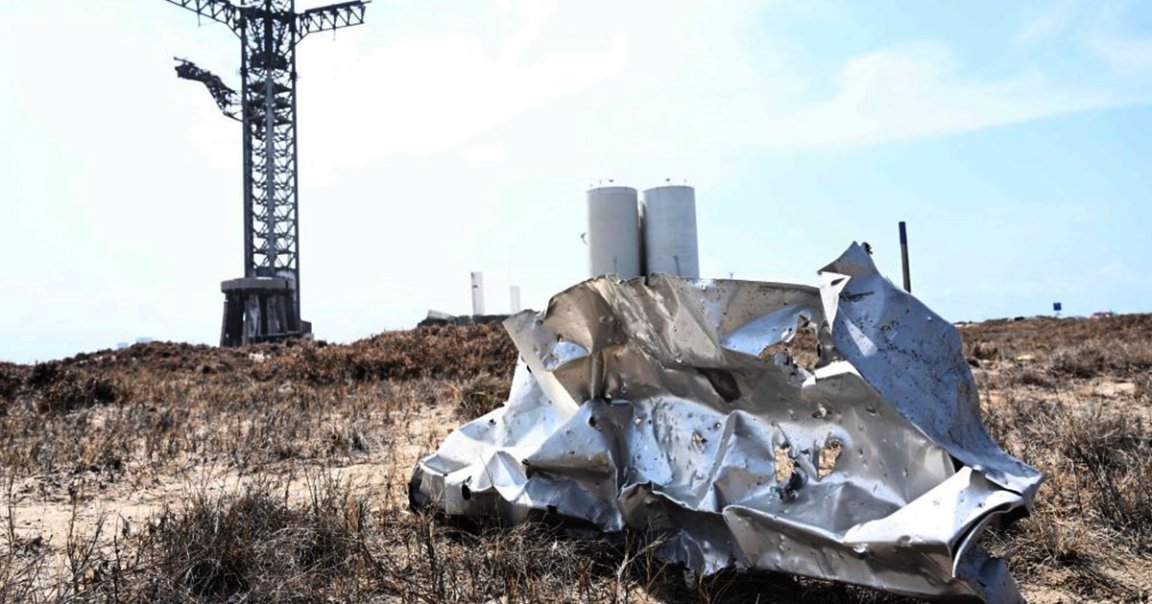
Mishap Investigation
SpaceX’s explosive orbital test flight of its Starship spacecraft, the most powerful rocket ever built, left a huge mark on its surroundings, scouring a massive crater in the ground and sending particulate matter flying for miles, far beyond the expected debris field.
Without any significant diversion measures in place, Starship’s Super Heavy booster tore through the company’s prepared concrete launchpad, kicking up heavy debris.
The incident was so violent that it’s caught the attention of the Federal Aviation Administration, CNBC reports, which has grounded Starship until it can conclude its “mishap investigation” — signs that SpaceX may have additional hurdles to overcome before it can try to get its Starship orbital again.
Debris Field
Fortunately, there haven’t been any reported injuries or damage to public property as of last week.
But that wasn’t exactly a guarantee. The massive explosion of dozens of Raptor engines igniting at once sent particulate matter hurling for several miles, raining down on Port Isabel, a city that’s six miles from the launch pad. It was a powerful enough blast to even shatter windows in the city.
Given the distances involved, particulates rained down far beyond the limits of the expected 700-acre or one-square-mile debris field caused by an “anomaly,” as outlined in the FAA’s environmental assessment, which had to be concluded before SpaceX could get a launch license for last week’s test.
And that’s not to mention the effects the powerful blast could have on the endangered species that live in the area.
The particulates could even pose a danger to human health, with environmental engineer Eric Roesch noting on his blog that “the possibility of a widely dispersed plume of emissions was not disclosed by the FAA or SpaceX, during the initial environmental permitting and approval process.
Try, Try Again
Where that leaves SpaceX’s opportunity to try again remains to be seen. The FAA told CNBC in a statement that it will first have to confirm that “any system, process, or procedure related to the mishap does not affect public safety” before Starship can fly again.
SpaceX will also have to complete additional “environmental mitigations” before a second launch attempt, due to “debris entering adjacent properties.”
In other words, it may take longer than the optimistic “one to two months” that SpaceX CEO Elon Musk estimated in a tweet following last week’s attempt.
More on Starship: Video Shows Falling Starship Debris Smashing a Minivan